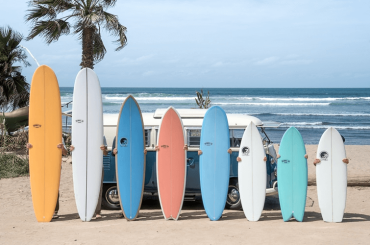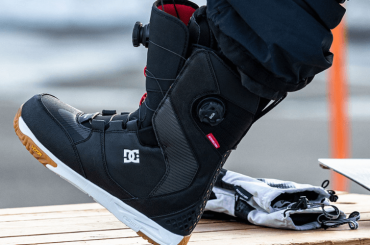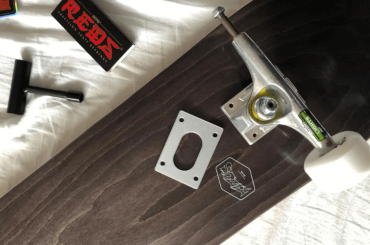Do you think it is safe to wear the same helmet for skateboarding and biking? If not, then you’re right!
Aside from the difference in appearance, skate helmets and bike helmets also have some design and functional differences that play a significant role in your safety!
Most of us love to do skateboarding as well as biking. The helmets designed for skateboarding and biking differ depending on the fall and impact on the ground.
Some Major Differences between Skateboard Helmets and Bike Helmets
Skate helmets are designed for people who do short, low-speed runs but have to survive lots of (low-speed) crashes.
Low-speed collisions tend to be nasty. You can hit your head hard. Road helmets are designed more for riding a lot in and protecting you in an odd crash.
1) Shock Resistance
Skate helmets differ from bike helmets due to the ability to protect from different type of impacts. Traditional, non-certified skate helmets are designed with a softer foam case that protects against multiple minor effects.
The milder foam case is used in skateboard helmets to protect the skull from a sudden low-speed hit on the ground.
In contrast, a bike helmet is made out of a rigid EPS foam designed to take one enormous impact, and then it breaks, after which you need to replace the helmet.
Traditionally, skateboard helmets are not certified, and you can also use rigid EPS foam helmets for skateboarding. Still, it will only endure one major hit, and you’ll have to replace it as skate-boarding involves repeated falls.
2) Differences in Design Criteria
A bike helmet differs from a skateboarding helmet according to material and design. A bike helmet is made from a thin but relatively resilient material and more rigid foam as bikers are less expected to be crashed than skateboarders.
Biker helmets are made specifically to cover all parts of the head: The top, sides, and the back, as bikers are expected to be hit from many sides.
A biker helmet is designed with a ventilation feature as bikers ride to urban areas, mountainous regions, or hilly places where they would need a lot of ventilation through their head to keep it cool and protect it from any possible injury.
Skateboard helmets are designed to provide complete coverage of your head and a little coverage to the back. These helmets are designed with solid structure with less or no ventilation feature as skateboarders do not require much ventilation to their heads.
3) Physical Coverage
One significant difference between skate helmets and bike helmets is their distinct designs for head regions that they protect. Skate helmets are traditionally round and smooth with a padded backside to protect the back of your head. Skateboarders typically fall on the back of their head, so the padded foam protects the head from severe injury.
In contrast, bikers rarely fall on the back of their head. Mostly they hit directly on the sides of the front. Thus, complete protection on the head’s sides and front are considered while designing a biker helmet.
While buying a helmet for an electric skateboarder, one thing that should be kept in mind is to get a helmet that covers the back of your head as a traditional skate helmet does. Because your board can accelerate quickly, you could be thrown off and backwards if you misjudge how much throttle you’re applying.
4) Speed Factor
Another significant factor that differentiates a skate helmet from a bike helmet is that the Speed factor is considered while manufacturing the helmets. While riding a bike, the rate tends to increase.
The biker accelerates depending upon the road and traffic smoothness; speeding your cycle in traffic areas results in accidents with a severe hit and significant momentum. That’s why Bike helmets are designed to cover the skull area that is prone to injury during full impact to the ground.
While skating, you control the throttle as skateboards usually don’t speed, and if the skate goes uncontrolled, it results in a low impact hit to the ground, and you experience little momentum. Thus, depending upon the severity of the blow due to speed rush, helmets are manufactured differently.
Certifications Difference for Skateboarding and Biking Helmets
CPSC: This is the standard US certification required for bicycle helmets. Helmets meeting this standard protect against skull fractures and severe brain injuries when the helmet is used correctly.
ASTMF: Just like the US certification for Bike helmets, certification for skating helmets is also required. These certified skating helmets protect you from any collisions or injuries.
Many skate-style helmets only meet the CPSC standard, so they are inappropriate for skateboarding.
Which Helmets Last Longer? Skating Helmets or Biking Helmets?
How long does a motorcycle helmet last? A general rule of thumb is 3-5 years considering that it has not experienced any full-blown damage in a severe accident.
Most manufacturers guarantee a replacement of your helmet after 3-5 years if you’ve not encountered any significant hit. The same is the case for skating helmets; if appropriately used without dropping them, they can last up to 3 or 5 years.
Things to Look for While Buying a Biking Helmet:
If you’re buying a helmet for biking, then you should consider the following points:
1) This helmet is CPSC certified
2) It has a rigid EPS foam support
3) It covers the top of your head, the sides, and the back.
4) A biking helmet is made of a resilient material to withstand any severe hit by a heavy vehicle or a high-speed crash on the ground.
5) It has a proper ventilation feature to provide oxygen to your brain.
What are the Chances of Injury if You Wear a Skating Helmet for Biking?
As discussed above, the impact of injury by falling from a high-speed bike is different from low-speed crashing in skateboarding. The functional and structural differences between a skateboard helmet and a biking helmet make it inappropriate for other purposes.
Suppose you wear a skating helmet for biking. In that case, you’ll probably encounter severe hits on your frontal lobes or temporal areas, as skateboard helmets are specifically designed to protect the backside of your head more due to the assumed fall on the back. Moreover, skateboard helmets are not designed to withstand a single major hit but only multi minor hits.
FAQs about Skate vs Bike Helmets:
Some frequently asked questions that pop-up in mind while buying a helmet for skateboarding and biking are mentioned below with appropriate answers:
a) What should look for in a skate helmet?
If you’re buying a helmet for skateboarding, then the following points are a must to be considered:
- It should be ASTI certified.
- Skating helmets should have a multi-impact resistance material.
- It must have several softer foam shells to protect all parts of your head in low-speed crashing.
- There is no need for a ventilation feature as skaters does not need it.
- A skater helmet must be well-padded on the backside as skaters are more prone to fall back on their heads.
b) Can you use a skate helmet for biking?
No! You cannot use a skate helmet for bike riding. In bike riding, High-speed accidents and significant injuries are involved, and a soft padded skate helmet cannot support the cause.
If you love biking and skateboarding, you don’t need to buy different helmets for both of them. You should buy the one that is both ASTI and CPSC certified as these certified helmets guarantee to protect you. But don’t wear a helmet that is certified for biking but not skateboarding and vice versa.
c) Do I need a helmet for roller skating?
It depends on the place/ area where you’re going to skate.
If you’re skating in your social skating space with indoor skating rinks, then helmets are not required as the chances of any severe injury are null. But if you choose to roller skate in hilly areas or mountainsides with a thrill riding experience and fast speed, a helmet is a must for protection as there is a chance of crashing.
And these chances are significantly more if you’re not a professional skater.
Suggestion for Dual Certified Helmet:
Triple Eight Dual Certified bike and skateboard Helmets are ABS shell protected and impact-absorbing helmets with EPS foam liner, making them ideal for skateboarding and biking.
Dual certified with US CPSC and ASTM F-1492 safety standards and suitable for age groups of 5 to older.
It is ideal for biking, skateboarding, scooters, BMX, roller derby, and commuting.
Conclusion:
Thrill enthusiast love to do skateboarding and biking both but safety is of utmost importance. A common misunderstanding is the use of the same helmet for both purposes. Skateboard helmets are different from biking helmets. The difference lies in the injury you get after low-speed crashing through skateboarding and high-speed accidents from biking.
Skateboard helmets are structurally different from biking helmets as they are made to withstand several minor injuries and can last for several years. We hope you find this article informative and grasp the significant difference between skate helmets and Bike helmets.





